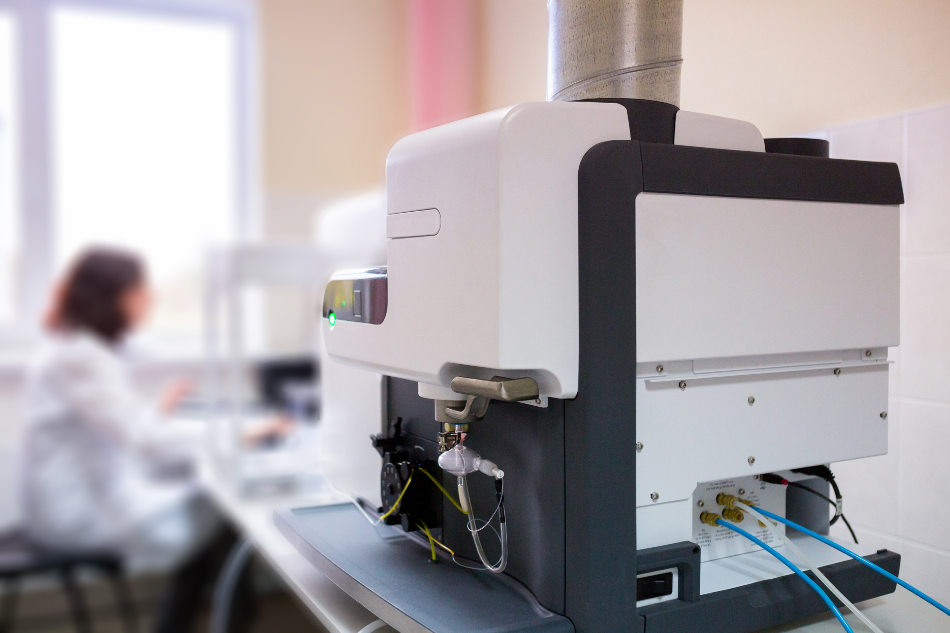
Image Credit: Sodel Vladyslav/Shutterstock
Atomic Emission Spectroscopy (AES) has a long history; as far back as the 1550s, where qualitative applications based on the color of flames were used in the smelting of ores. It is based on the physical and chemical principle of atoms that, after being heated by a flame, return to a normal energy state and give off excess energy in the form of light.
The technique helps identify the components rather than measuring the amount of them. However, the intensity of the emitted light is proportional to the number of atoms in the element, and so can provide quantitative analysis too.
The 17th Century
In 1666, Sir Isaac Newton showed that white light from the sun could be separated into different colors of light; he also introduced the word ‘spectrum’.
Newton used a flame, and a small aperture to define light into a single beam which he collimated or made parallel with a lens. He used a prism to disperse the light into their individual frequencies and a screen to display the spectrum.
The idea was developed over time, with work from William Herschel, JW Ritter, Joseph Fraunhofer, and William Bunsen, all of whom studied spectra from sparks, arcs, and flames. They found that different compounds when burned or heated in a flame, would emit light of a different color; if it contains strontium the flame would burn red, yellow if it contained sodium and green if it had copper in it.
Light consists of electromagnetic radiation of different wavelengths. When elements are heated, electrons become excited and move from one energy atomic orbital to a higher one. When they return to a lower energy state, they emit energy in the form of light. The color a flame turns is unique to each element and allows them to be identified. Flame analysis remains one of the most popular methods, along with plasma analysis, which was introduced in 1964.
The 19th Century
In 1859, Gustav Kirchhoff recognized that each element and compound had its own unique spectrum and by studying the spectrum of an unknown source, you can determine its chemical composition. Kirchhoff’s laws also state that emitted power and absorbed the power of light at a given wavelength is the same for all bodies at the same temperature.
Together with Bunsen, Kirchhoff established spectroscopy as a scientific tool for probing the atomic and molecular structures and founded the field of spectrochemical analysis for examining the composition of materials.
Emission spectroscopy observes the wavelength of photons emitted by atoms or molecules during their conversion from an excited to lower energy state; each element has a unique wavelength according to their electronic structure and by observing this, the elemental composition of a sample can be discovered.
Very early in its history, AES was understood to be a very powerful tool, but it was not utilized extensively until the 1930s. Although the quantitative application based on atomic emission from electric sparks was developed by Sir Norman Lockyer, a British scientist and astronomer credited with discovering helium in the 1870s, it was Henrik Lundegårdn who pioneered the technique.
The breakthrough came with the discovery and implementation of the photoelectric effect, which describes the emission of electrons when light hits material; these emitted electrons are known as photoelectrons. The effect can be attributed to the transfer of energy from light to the electron.
Conclusion
AES is a qualitative technique, it allows scientists to figure out what metal they are looking at, and it only concerns visible light. It is an incredibly powerful means of determining the elemental composition of samples based on the emission of light.
Sources and Further Reading
Disclaimer: The views expressed here are those of the author expressed in their private capacity and do not necessarily represent the views of AZoM.com Limited T/A AZoNetwork the owner and operator of this website. This disclaimer forms part of the Terms and conditions of use of this website.